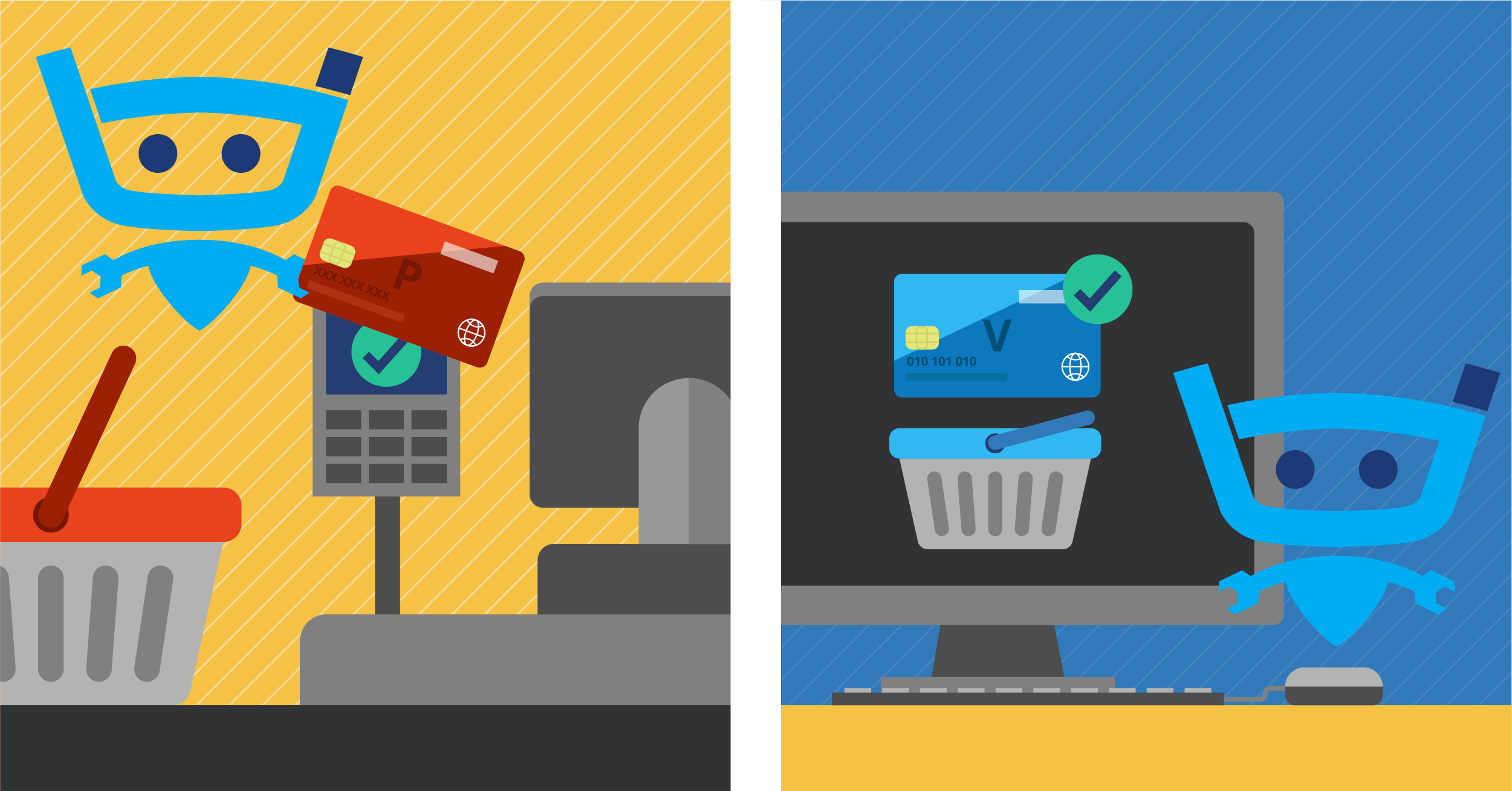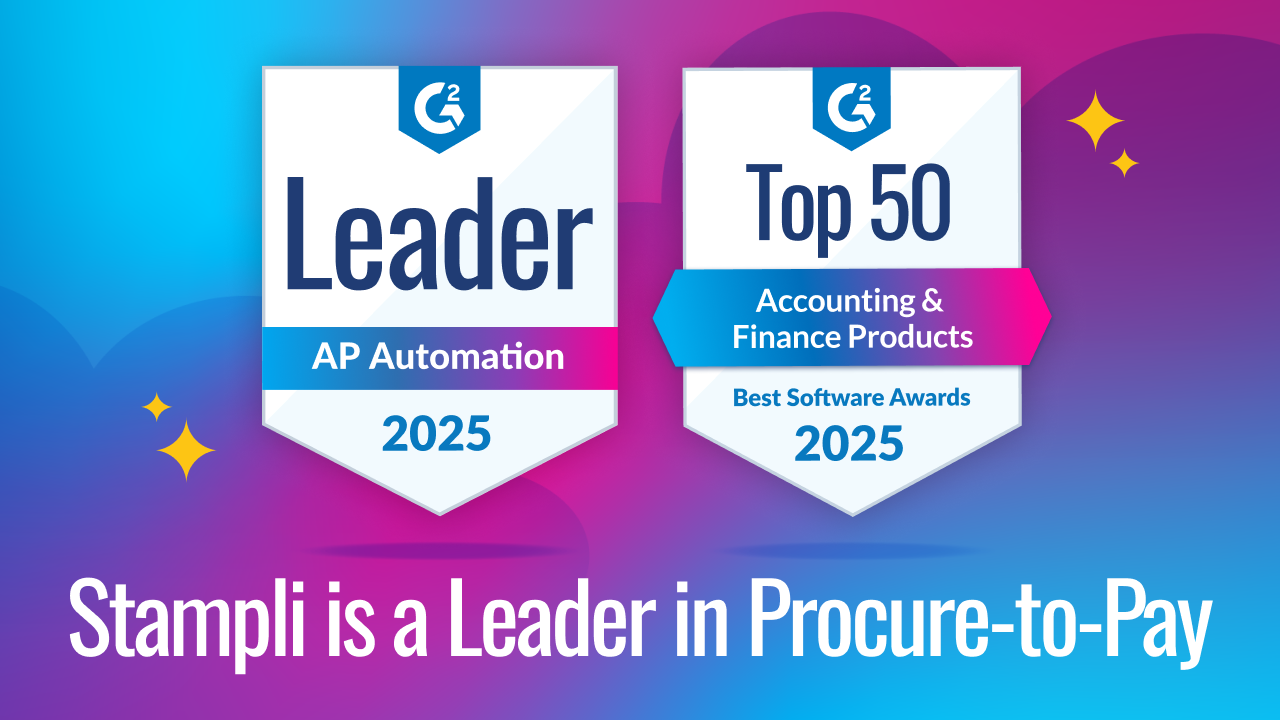Virtual Cards vs. Physical Cards: Which is Better for Your Business?

Every business has expenses, and most use credit cards for at least some of those expenses.
And for businesses that are making those purchases online the question is:
Should we use a virtual card vs. a physical card?
By now, you’re likely up to date on virtual credit cards, but if you need a refresher, we recommend also checking out our Virtual Cards: The Good, The Bad, and The Ugly post.
As accounts payable professionals, we’re used to paying the bills. If we pay them on time—great. If we pay the bills on time and correctly categorize them in our AP system—even better. But if we pay the bills on time (or early), correctly categorize them in our AP system (automatically), and provide extra security, accountability, and make the entire payment process easier, well that’s the Holy Grail of payments.
But we’re getting ahead of ourselves. This post is written for organizations who are trying to decide if they should give their employees and team members physical cards or virtual cards. In this post, we’ll break down the definitions of each type of card, compare the functionality of each, and outline several use cases.
As you’ll see, while the two types of cards have a very similar purpose (making payments), they actually have vast foundational and functional differences that you can use to your advantage. Let’s rock.
A closer look at virtual cards vs. physical cards

Here are some quick definitions to get us started:
What are physical cards?
Physical credit cards are your standard, run-of-the-mill cards with a 16 digit unique card number and are made of plastic; same as the ones you likely have in your wallet or purse.
Organizations issue these to individual employees for business purchases on a long-term basis, i.e., “Here’s your corporate credit card.” Physical cards are commonly used for card-present (CP) transactions, where there is a terminal that electronically captures the card data. Moreover, physical cards can also be used for card-not-present (CNP) transactions, such as making a purchase online or over the phone.
But they can also keep a small amount of cards that lend out to certain employees on an as-needed basis, i.e., “Here’s the company card for this specific purchase. Please return it when you’re done.”
What are virtual cards?
Virtual cards only exist in digital format and like physical cards, they too consist of a unique 16 digit card number and all the numbers you’d normally see on a physical credit card (unique CVV, expiration date).
Virtual cards have similar functionality to physical cards in that you can assign them to a specific person, specific vendor or vendors, and limits can be set. Moreover, some types of virtual cards can be issued as single-use, multiple-use, or revolving card types. Additionally, you can create virtual cards instantly, as opposed to waiting 1-2 weeks for physical cards to be printed and mailed.
A single-use virtual card is created through a process called tokenization, which randomly generates card numbers, CVV, and expiration date. These single-use cards are just as they sound and can only be used one time.
Multiple-use (or multi-use cards) are like a single-use card, but you can remove the number of purchases allowed. They can only be used up to the card amount and will be no longer valid after the amount is reached.
Recurring virtual cards are commonly used for payments when vendors require credit cards and are a great option for that.
Should you use physical or virtual cards?
We can’t necessarily tell you exactly which card to use because every organization has different needs when it comes to managing their expenses, but we can break down the core benefits of virtual cards and how they fit in common purchase scenarios.
Online purchases
Online purchases are convenient, but they can also be perceived—by some—as inherently risky due to the rise of shadow spend, where employees bypass procurement policies and make card purchases without receiving authorization prior to making the purchase. One issue with online purchasing and shadow spend is it leaves accounts payable (AP) in the dark, that is, until the monthly corporate credit card statement arrives. This can actually still be a problem with virtual cards unless you find one that fully integrates with your AP platform.
With virtual cards integrated with your AP platform, you’re in complete control over credit card usage. You can create cards for specific or general usage based on cardholder, usage type (one-time, multi-use, revolving), amount, vendor, purpose and budget. Then when it comes to card purchases, you can see card transactions as they happen inside the integrated AP system and process them like your invoices.
Recurring purchases
Many businesses have regular, expected monthly charges. Or, they pay the same vendor repeatedly for the same service, like when your credit card is charged for your Google Ads campaigns when you reach your spending limit.
With virtual cards, you can set them up so that they only work with a single vendor. Or, you can configure them so that they are programmed with a spend limit that matches the regular, expected monthly expense for a service like a phone bill. Additionally, you can use virtual cards to pay recurring invoices from a supplier, but that particular card would only work for that supplier. In addition to being more secure and more convenient, this also offers a higher level of organizational spending control.
Single or one-off purchases
Let’s say an employee comes to their manager and wants to buy an online course that will help her do her job better. In the past, your options were to have the employee buy the course herself and expense it to the company, or the manager could allow her to borrow a company card to conduct the purchase.
With virtual cards, you could spin up a single-use card—essentially just a string of numbers—for the exact amount of the purchase and have it expire afterwards. The manager wouldn’t have to take the risk of loaning out the card or interrupting the workday to make the purchase herself.
Issuing cards to several employees
Loaning out equipment and assigning company credit cards really isn’t that big a deal for microbusinesses, but once you cross a certain threshold of employees, it becomes a little nerve-wracking when it comes to shadow spend. In the case of company credit cards, the idea of employees leaving them overnight at a restaurant, loaning them to friends/family/coworkers, or using them for illegitimate purchases can be a nightmare. Although disputing fraudulent credit card charges has improved over the years, it’s still a huge pain in the rear…
What if you could easily spin up virtual cards for employees based on their spending patterns? Each one could have unique spending limits, approved vendors, and other configurations. Additionally, you can manage all those cards from a central location with high visibility into the actual spending. That is exactly what virtual cards can do.
By now you should have a pretty good idea of the different scenarios where virtual cards can come in handy, but that’s actually not the whole story. Virtual cards also carry some additional benefits that AP professionals will like.
Virtual cards for accounts payable
From an accounts payable lens, here are some specific advantages for virtual credit cards.
More control over payments
Use easily configurable virtual card requests and approval workflows to quickly create new cards based on your controls—and instantly suspend or cancel cards as needed. Moreover, use virtual cards for all or some of your credit card transactions, as integrated AP systems like Stampli and Stampli Card will never contact your vendors to encourage them to accept credit card payments. You also have the controls to pay with your preferred payment method such as a physical card.
Reviewing spending analytics
Virtually card payments are instantly reconciled. Compare this to waiting for your credit card statements, or worse, writing a check. With instant reconciliation, you have a much better idea of how much cash your company has on hand at any time.
Additionally, virtual cards come with a dashboard that contains the card limit, current spend, and available balance. This in addition to the card holder, expiration date, card type, and a list of transactions which are all updated in real-time. No more waiting for the monthly statement to arrive to have eyes on corporate credit card spend.
No more chasing down credit card purchases
After a purchase is made with a virtual card, automated alerts are sent to cardholders requesting them to share supporting documents such as a receipt. There’s no need to chase down card holders and for those frequent non-responders, AP has the control to suspend cards at the click of a button.
How to get a virtual card
It’s actually super easy to start using virtual cards for your business. For starters, you could ask your bank if they offer this service; many do. Or, you could engage a spend management platform (companies that specifically offer virtual cards) and go that route. There are quite a few of these services on the market with varying costs and features.
Or…
Meet Stampli Card
Yep, that’s right—we have our own virtual card service with Stampli Card! This product was heavily requested by our customers and complements our existing AP Automation platform and Stampli Direct Pay services perfectly.
Stampli Card comes with some extra benefits, such as:
- See all your corporate spend in one place no matter how its paid
- Instantly create credit cards and control how they are used
- Automate capture and process card transactions inside Stampli
Additionally, for Stampli customers, the Stampli Card is the only card that automatically syncs to Stampli and your financial system so you can process your credit card transactions like invoices, with full documentation and verification.
It’s like AP on Easy Mode.
Do you have any questions about virtual cards, or would like to learn more about how they fit into the overall AP process? Set up a consultation with one of our AP Heroes today!




